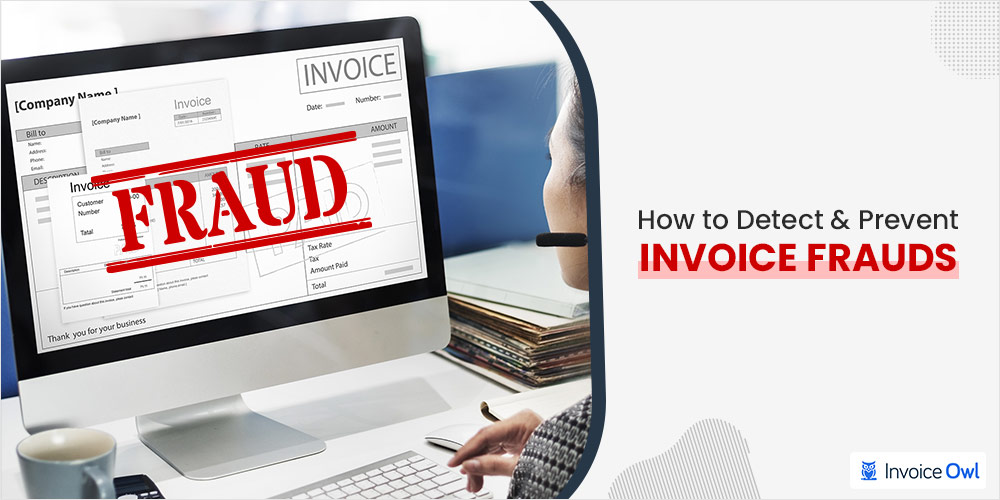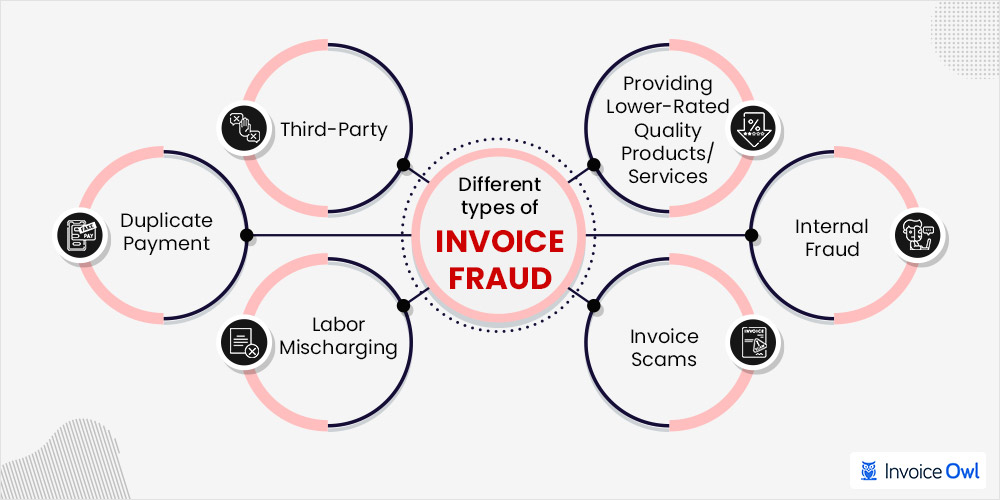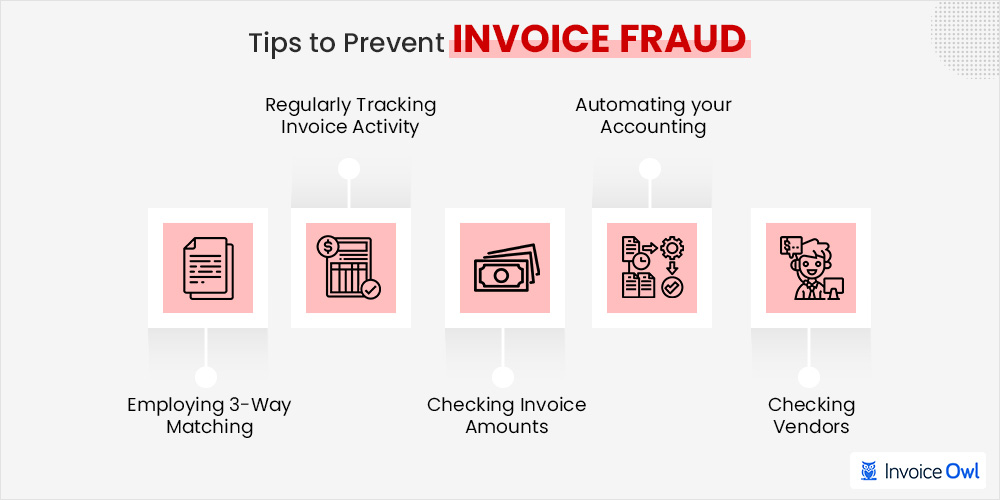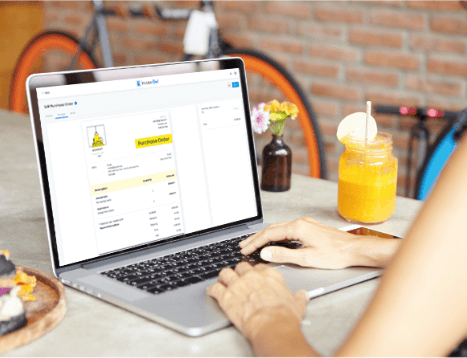Small businesses hit the worst due to invoice fraud scams. And it is increasing day by day. According to reports, small business owners lose somewhere around £ 2100 to such types of fraud.
But this can be stopped or you can be saved from such a trap if you know a few triggers and preventable actions. Lack of information is one of the causes of such frauds executing successfully in today’s advanced and technology-dominated world.
This article is all about sharing a wealth of information on how to identify fake invoices. If next time anything happens, you are ready to counter and shut the fraudsters down.
Table of Content
What is Invoice Fraud?
Invoice fraud occurs when a third party submits fake invoices to a company with the aim to extract money. Invoice fraud occurs when a fraudster attempts to change a supplier’s payment details in order to deceive the company into sending money to the fraudster.
Fake invoices are created with knowledge of the payment relationship between the buyer and the supplier.
Companies are unaware of the scheme and they were huge sums for legitimate goods or services that were never rendered. Studies show that Invoice fraud costs small businesses billions of dollars every year and it’s rising.
So, business owners need to strategize their accounts payable process for combating invoice fraud effectively.
Some Invoice Fraud Statistics:
Risk is attached to any business, and the biggest risk in the business is to lose money despite having security. Big sharks are not even immune to invoice fraud.
Below is the list of frauds and statistics:
- According to reports, out of 10, there is 1 small business that gets a major hit through online payment frauds.
- There are still 43% of businesses that are unaware of invoice fraud.
Just like many such frauds exist in today’s world and many bank accounts vanish in seconds.
Now that you know how much fraud has penetrated the financial system, let’s also know the different types of fraud.
Safe Invoices for Straight Payments
Create safe and secured invoices through InvoiceOwl and get paid directly to your bank accounts.
Start Your FREE Trial
What are the Different Types of Invoice Fraud?
So here are different types of invoices for which you need to know how to find fake invoices. Let’s find it out.
-
Third-Party
Once an invoice is created and submitted for payment for rendering the services that were never delivered to the customer come under this invoice fraud.
Here, a vendor might be working alone or we can say that a hacker will be solely responsible for creating such invoices. It is sometimes referred to as invoice redirection.
In this type of invoice fraud, it is possible that a vendor may be collaborating with employees of the invoiced organization to ensure that the illegitimate invoice passes through the accounts payable process.
-
Duplicate Payment
Duplicate invoices are one of the biggest costs that many companies’ account payable departments need to face. But, it’s not always just due to the result of vendor invoice fraud.
Many times, it might happen that a vendor re-submits an invoice if there is any delay in the payment. To get rid of or eliminate such invoices to be paid twice, there should not be any confusion within the AP department’s purchase order and automated invoice matching process.
And such confusion occurs only due to dishonest vendors who are responsible for submitting a duplicate and fraudulent invoice.
-
Labor Mischarging
In this category, vendors may include false information on an invoice. Such invoice data can be related to:
- Numbers of staff employed
- Working hours on an order
And it’s just for the purpose of inflating an invoice and increasing the payment fraud they receive. We can also say that it is solely responsible for creating inflated invoices or false invoices.
-
Providing Lower-Rated Quality Products/Services
Another common cause of invoice fraud experienced by experienced accounts payable teams is when vendors attempt to provide inferior quality products to those ordered.
Schemes such as these can often be very sophisticated and intended to deceive the buyer into believing that the inferior product is actually genuine.
-
Internal Fraud
Most businesses usually focus on the prevention risk of suspicious invoice fraud from vendors and external scams.
An internal invoice fraud happens when an employee who is handling the invoicing process receives a legitimate vendor invoice. Instead of making a payment directly to the vendor’s bank account, he/she diverts it to some different bank account.
On a temporary basis, the employee will change the vendor’s bank account details with that of an offshore account in their organization’s accounts payable system. It is just to avoid any type of detection before reverting the details. The legitimate invoice can then be paid to the vendor.
Both external invoice fraud and internal fraud are very real threats to all organizations.
-
Scam invoice
Scam invoice the process when numerous payments are made in the same period to the same vendor.
An alternate way to deal with an invoice scam is when the fraudster repeatedly submits fake bills with the same product, amount, invoice number, and even invoice date.
Apart from this, there are some other general items that fraudsters can point to as suspicious activity.
- Use a legitimate account number by changing one digit.
- Changing the contact information every time often gets overlooked during the bill validation process.
As such, the fraudsters are completely aware that simply changing the address or contact number on the document can help them get away without any suspicion.
Another important constraint that you need to check is the domain of the company email address or website. For example, if the company’s domain is showing as “a.com”, and on the next day it becomes “a.org”, then you must stay alert and must check further things.
A common theme of the phony invoice is it sometimes shows up in even amounts. Rarely are goods and services charged in nice round numbers. Given that, bills that total even amounts should be questioned.
How Does Invoice Fraud Happen?
Scammers easily find and exploit the vulnerabilities of the company’s accounts payable (AP) process. It is made possible by having poor controls and a lack of communication between the company’s departments.
Many big companies still use a manual and paper-laden AP process.
Invoice fraud is a standard method for scammers as they can easily identify and successfully exploit the weak points within a company’s AP process. Email, postal, fax, or even inter-office supplies are the common channel through which they receive such information.
The subsequent crucial issue which you want to carry out is an ad hoc system that includes passing the file to numerous people in the course of the company. Whether it makes it to the proper individual(s) is questionable.
Even if the file does attain the appropriate parties, there may be an immediate financial loss of monitoring to make certain it receives authorization on time.
By the time the document returns to AP, it’s far regularly nearing the due date or worse yet, overdue. Scammers rely upon this to create a feeling of urgency that causes corporations to pay invoices without verifying invoice information hastily.
Another common scenario that most companies have is that the department that ordered the goods has little to no involvement in the AP process.
Worse, is when the designated approver is a busy department head who has no insight into inventory and little time to verify. Thus, they rely on word-of-mouth or the assumption that the product was delivered.
Even those companies with a more sophisticated approval process run the risk of getting hit with phony or fraudulent invoices.
While they may have some controls and procedures in place, there is always the chance that each approver takes for granted that the next person in line will read and validate the bill.
In each of these scenarios, there is no verification that the bill matches the Purchase Order (PO) or even if the items were delivered.
As we know that invoice fraud results in an instant loss, let’s give you a few quick tips to avoid it in the first place.
Tips to Prevent Invoice Fraud
No matter how subtle they are, a fraudulent invoice always has some warning signs on them.
So, let’s become a pro at detecting invoice fraud by reading the following tips.
-
Employing 3-Way Matching
The most essential thing that you need to do to get rid of fraudulent invoices is to match your invoices with supporting documentation like the purchase order and receipt of goods and services offered.
The primary reason behind it is that most fraudsters do not take seriously fabricating these three supporting documents.
-
Regularly Tracking Invoice Activity
If you’re tracking invoice activity on a regular basis, you’ll notice when something changes or seems odd.
Let’s say if you receive about 12-15 invoices per month from one specific vendor and suddenly that number increases at once. So, in that case, you must first verify the same with the vendors about the numbers or registered in the directory listing.
Duplicate invoices or invoices that bear a resemblance to orders that the company regularly processes are considered to be the common type of invoice fraud.
On the other hand, business email compromise scammers monitor email communications for months to years before launching an attack. It becomes your prime responsibility to keep a close eye on invoice activity or take advantage of a system that does it for you is an excellent way to protect yourself.
-
Checking Invoice Amounts
You need to be very careful to know how many scammers know about your target company’s approval process.
It might happen that your business may require an additional review process for invoices over $3,000, so they’ll send you an invoice just under that amount.
Anything coming in that’s close to your threshold should get another look.
Invoice automation makes it easy for you by tracking the total history of payments from each vendor and flagging any variations from the norm.
-
Automating Your Accounting
AP Automation plays an important role in preventing invoice fraud. Anywhere humans are involved in a process means there’s a chance for fraud to occur.
The human element is eliminated by automation. You can’t completely remove people from your accounting AP processes, but you can reduce the areas in which people must be involved and establish better internal controls, as many of the other tips mentioned.
Let us highlight some of the best examples of accounting automation:
- Sending out invoices
- Late notice follow-ups
- Accepting invoice payments and recording them in the books
- Receiving bills digitally and paying them automatically, assuming certain criteria are met.
- Matching payments to orders, creating a receipt and sending them out
Some automation uses built-in AI technologies to identify potential fraud. This is yet another level of detecting fraud that does not require the involvement of a human.
-
Checking Vendors
Fraudulent invoices are typically issued under fictitious business names or under a legitimate name but with a fictitious address or bank account number.
You should look up any new vendors to ensure they’re legitimate and locate their addresses on Google Maps. If the address is residential or a post-office box, they raise red flags. Also, if your existing vendors’ account numbers or information changes, contact them directly.
Looking for the Best Invoice Automation Software? InvoiceOwl Can Help
No matter whether you are a sole proprietor or a company, the threat of invoice fraud remains constant. Your hard-earned money is always at stake when it comes to fraud. One minor mistake is neglected or ignored and millions of dollars wipe away in seconds.
The only prevention is by having automated software that ensures no repetitive tasks happen, and the invoice process remains secure. InvoiceOwl ensures that whatever transaction happens remains between you and your customer.
With InvoiceOwl, you can stay rest assured with your accounts receivables, accounts payables, and process automation.
Who is responsible for preventing and detecting fraud?
Government is the primary responsible party considered for preventing and detecting fraud. This authorized body has all powers to form a team
- Identify frauds
- Create a strong firewall to prevent frauds from breaching
- Create an environment so that security risks perpetrates
They should also work on forming a team of members who perform an internal audit. These auditors are well-versed in the different types of fraud. They evaluate
- Potentiality of frauds
- Non-compliances to policies
- Numerical and alphabetical errors
Apart from internal auditors, some external auditors ensure that everything is complied with by auditing standards. They also perform tests, samplings, and analytics to conclude. However, it becomes more difficult for external auditors to trace errors out of misstatements from fraud than misstatements from multiple errors.
So, if it is fake receipt fraud or fake invoices, then this is traceable by external auditors.
Now that you know who detects and prevents fraud, you are all done with this article. Get answers to your queries, concerns, and questions.
-
Is it illegal to send fake invoices?
Yes. It’s completely illegal. If the invoice contains information that is manipulated to show purchases that were not made or a price that is higher than that actually paid, it likely constitutes civil fraud and may constitute criminal fraud.
-
Can you fake an invoice?
No. A person who aids the fraud by creating a fraudulent invoice could be charged as an accessory, or perhaps even as a principal perpetrator, of the fraud, civil or criminal poses.
How do you know if an invoice is real?
To check whether an invoice you received is real or not, you must follow these essential tips:- Check the logo so that it should not be so crisp.
- If you find the account number is somewhat different.
- If there is any change in the contact information.
- If there is the same amount repeating again and again.
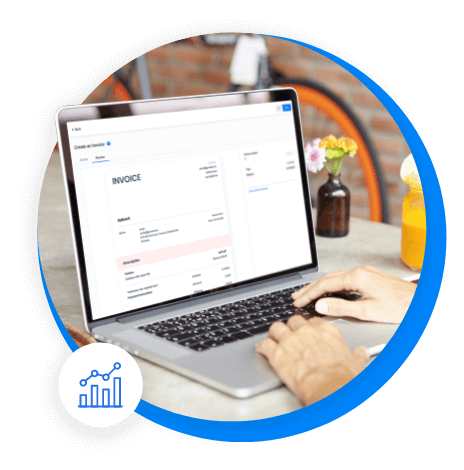
Create Professional Invoices Online Easily and Keep On Top of Your Finances
InvoiceOwl is a feature-rich invoicing app that helps small businesses, freelancers and contractors to create invoices on-the-go and get paid quicker!
Conclusion
We hope you got a clear idea of invoice fraud and how you can effectively prevent them. The risk of invoice fraud is constantly increasing.
However, if you’re aware of the different sorts of fraud, your company will be in the greatest position to stop it. To add to it, the best way to get rid of invoice frauds is using online invoicing software like InvoiceOwl.
InvoiceOwl allows you to easily create and send invoices to your clients and even you can customize as per your needs. All your invoice data are completely secured and you do not have to worry about invoice fraud.
What are you waiting for? Sign Up for Free or you can even download the InvoiceOwl app.
 By
By 